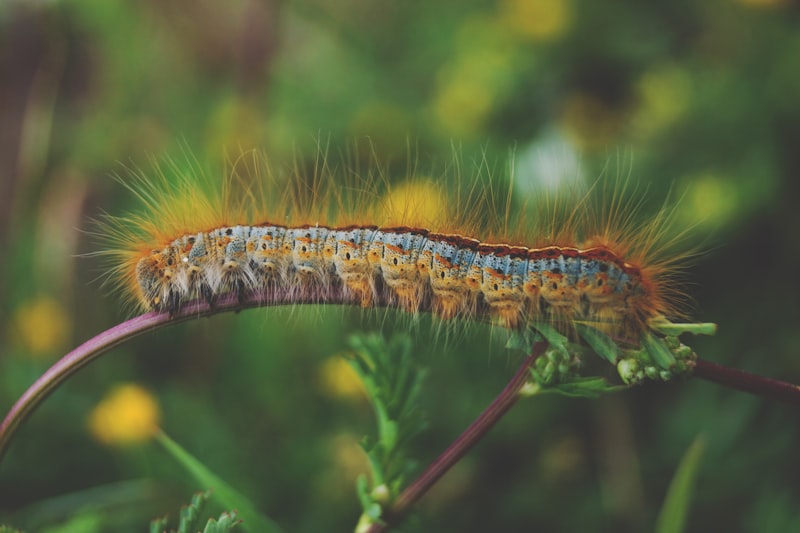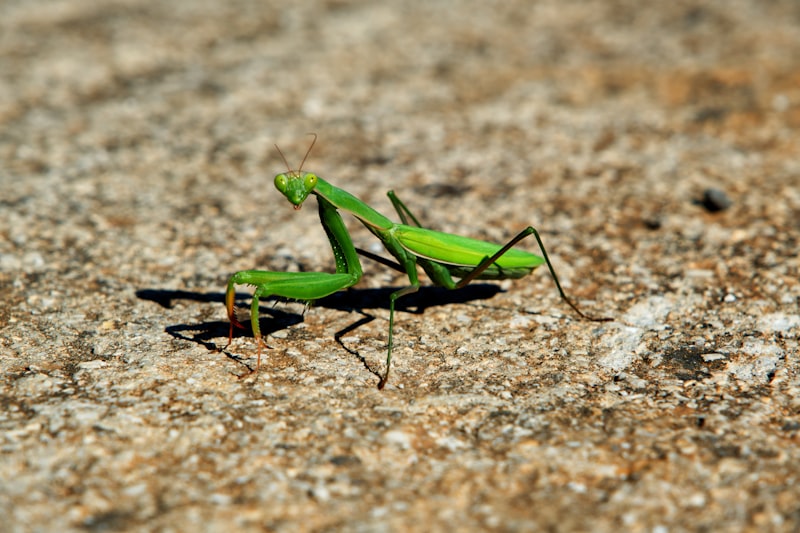Ever wondered about the world of creepy crawlers? Insects, with their astonishing diversity and fascinating behaviors, populate every corner of our planet. From the mighty Hercules beetle of the Amazon rainforest to the delicate Orchid Mantis of Southeast Asia, insects offer a glimpse into the marvels of evolution and adaptation.
One of the most awe-inspiring insects is the Atlas Moth, known for its immense size and stunning wing patterns resembling maps. Found in the forests of Asia, this moth captivates with its sheer beauty and symbolism in local cultures.
Another intriguing insect is the Bombardier Beetle, famous for its explosive defense mechanism. When threatened, it mixes chemicals in its abdomen to produce a boiling-hot spray that repels attackers—a true example of nature’s inventive solutions for survival.
Moving to the realms of camouflage, the Leaf-Tailed Gecko of Madagascar masters the art of blending in with its surroundings. Its leaf-like appearance and slow movements make it almost invisible to predators, showcasing evolution’s role in enhancing survival odds.
For those fascinated by architecture, the termite mounds of Africa present an engineering marvel. These towering structures, built by millions of tiny insects, regulate temperature, humidity, and air circulation with precision that rivals human-made structures.
Insects aren’t just creatures of curiosity; they play vital roles in ecosystems worldwide. Bees, for instance, are indispensable pollinators crucial for agriculture and biodiversity. Their decline poses a significant threat to global food security and ecological balance.
Exploring the world of insects reveals a tapestry of wonders, from the microscopic to the monumental. Each species, with its unique traits and adaptations, contributes to the rich tapestry of life on Earth. Discovering these creepy crawlers offers not just insights into natural history but also a deeper appreciation for the intricate web of life that surrounds us.
Incredible Insect Architects: How Termites Build Skyscrapers of the Savanna
Termites are more than just pests; they are master builders. Their skyscrapers, known as termite mounds, can reach impressive heights, sometimes towering over ten feet tall. These structures are meticulously engineered to maintain optimal conditions for the colony inside, despite the harsh African savanna environment.
One of the most remarkable features of termite mounds is their ventilation system. Even in the scorching heat of the savanna, the internal temperature of these mounds remains remarkably stable. How do they achieve this? The design includes a series of vents and tunnels that promote airflow, cooling the interior during the day and retaining warmth at night. This natural air conditioning system ensures that the colony can thrive in comfort year-round.
But it’s not just about temperature control. Termite mounds are also designed to withstand heavy rains and flooding. Their shape and composition prevent water from seeping inside, keeping the colony safe and dry. This resilience is crucial in an environment where sudden downpours can threaten the survival of many creatures.
The construction process itself is a marvel of teamwork and instinct. Termites work tirelessly, using a mixture of soil, saliva, and dung to mold the mound’s walls. Layer by layer, they create a structure that is not only functional but also durable enough to last for decades.
Interestingly, these mounds are not just homes; they also play a vital ecological role. They provide shelter for a variety of other animals, from reptiles to mammals, creating a mini-ecosystem within each mound. In a way, they are like bustling cities in the savanna, bustling with life and activity.
Secrets of the Glowworm: Bioluminescence in Nature’s Tiny Lanterns
Imagine wandering through a dark, damp cave, only to find it illuminated by tiny, mesmerizing lights twinkling like stars above you. These aren’t stars, though—they’re the glowworms, nature’s own tiny lanterns. Bioluminescence, the natural phenomenon that allows certain organisms to produce light, is the secret behind their mystical glow.
Glowworms, found in various parts of the world including New Zealand, Australia, and Europe, are not actually worms but the larval stage of insects like fungus gnats. They produce light through a chemical reaction that involves luciferin, a light-emitting compound, and luciferase, the enzyme that catalyzes the reaction. This biological process is remarkably efficient, converting chemical energy directly into light without producing heat—making glowworms some of the most efficient light producers in the natural world.
The purpose of their luminous display goes beyond mere aesthetics. For glowworms, bioluminescence serves multiple crucial functions. Firstly, it attracts prey—small insects lured by the glow fall into sticky silk threads the glowworms dangle from cave ceilings or overhanging banks. Secondly, it serves as a warning to predators, signaling toxicity or an unpalatable taste. This dual-functionality showcases nature’s ingenuity in using light not just for visibility, but also for survival.
Studying glowworms isn’t just about marveling at their beauty; it also provides insights into bioluminescence’s potential applications. Researchers are exploring ways to harness this natural light production for various purposes, from biomedical imaging to environmental monitoring. The adaptability and efficiency of glowworms’ light production make them a valuable model for sustainable technologies that minimize energy consumption and environmental impact.

Next time you find yourself in a dimly lit cave or forest, remember the tiny glowworms above you—nature’s enchanting lanterns, illuminating the mysteries of bioluminescence one twinkling light at a time.
The Leafcutter Ants: Masters of Agriculture in the Amazon Rainforest
Leafcutter ants belong to the genus Atta and Acromyrmex, comprising several species known for their distinctive behavior of cutting and transporting fresh foliage back to their underground nests. Their colonies can number in the millions, collectively forming intricate underground networks that rival human cities in complexity. Within these colonies, each ant has a specific role, from foraging and cutting leaves to maintaining and protecting the fungus gardens that sustain them.
What sets leafcutter ants apart is their unique farming practice. Unlike humans who cultivate crops for consumption, these ants cultivate fungus. They do so by meticulously tending to fungal gardens grown from the chewed leaf fragments. The fungus serves as their primary food source, nourishing the entire colony. This relationship is not merely one of convenience but of coevolution; the ants depend on the fungus for sustenance, while the fungus depends on the ants for its propagation and protection from pests.
Their farming methods are highly sophisticated. Leafcutter ants are selective about the types of leaves they collect, favoring certain species that promote optimal fungal growth. They also use antibiotics produced by bacteria to protect their fungal crops from parasitic molds, showcasing a level of agricultural sophistication previously thought exclusive to human practices.
In essence, leafcutter ants exemplify nature’s ingenuity and resilience. They transform the landscape of the Amazon Rainforest, influencing plant diversity and nutrient cycling on a large scale. Their ability to cultivate fungus as a food source highlights their adaptation to the challenges of rainforest life, where resources are abundant yet competition is fierce.
Meet the Orchid Mantis: Nature’s Master of Disguise
Have you ever heard of an insect that looks like a delicate orchid flower but is actually a master predator? Enter the Orchid Mantis, a fascinating creature that seamlessly blends into its surroundings, fooling both prey and predators alike with its stunning appearance. Found in the rainforests of Southeast Asia, this insect has evolved a remarkable strategy for survival.
At first glance, the Orchid Mantis appears like a living orchid, with pink or white petals and even the texture of a flower. This camouflage isn’t just for show; it’s a crucial part of how the mantis hunts. Positioned on flowers, it patiently waits for unsuspecting insects to come close, attracted by what they perceive as a safe haven or a potential mate. Little do they know, they’re walking straight into the Orchid Mantis’s trap.
When prey ventures too close, the mantis strikes with lightning speed, capturing its victim with powerful forelegs adapted for grasping and holding. Its disguise isn’t just visual; the mantis even sways gently in the wind like a real flower, enhancing its illusion. This mimicry isn’t only about deception but also about survival. By resembling a flower, the Orchid Mantis avoids becoming a meal itself, staying hidden from birds and other predators that might otherwise make it their snack.
What’s truly astounding is the Orchid Mantis’s ability to adapt its coloration depending on its surroundings. In areas with pink flowers, it adopts a pink hue; near white orchids, it turns white. This chameleon-like skill isn’t common among insects and showcases the mantis’s evolutionary prowess.
The Orchid Mantis isn’t just a marvel of disguise; it’s a testament to the ingenuity of nature’s camouflage. Its ability to mimic a flower with such precision and adaptability is a survival strategy honed over millions of years. Next time you see an orchid in the wild, take a closer look—it might just be an Orchid Mantis waiting for its next meal.
The Intricate Dance of the Firefly: Illuminating Nights Across Continents
From the humid jungles of Southeast Asia to the serene forests of North America, fireflies adorn the darkness with their enchanting glow. Each flicker of light is a signal, a language of love and survival in the intricate ecosystem of the night. Imagine a meadow in Japan, where hundreds of fireflies synchronize their flashes in a mesmerizing display, akin to a symphony of light orchestrated by nature itself.

The secret to their luminescence lies in a chemical reaction within their bodies. Through a process called bioluminescence, fireflies produce light without heat, utilizing luciferin and luciferase to generate their signature glow. This ability not only aids in attracting mates but also serves as a defense mechanism against predators who learn to associate their luminescence with an unpleasant taste.
In folklore and literature, fireflies symbolize various things: from hope and romance to the fleeting nature of beauty. Their appearance often coincides with summer nights, adding a touch of magic to warm evenings spent outdoors. People gather to witness their ethereal glow, creating memories that linger long after the fireflies have faded into the night.
Conservation efforts are crucial to preserving these natural marvels. Firefly populations face threats from habitat loss, light pollution, and climate change, which disrupt their habitats and breeding cycles. By protecting their natural environments and reducing light pollution, we can ensure future generations continue to marvel at the intricate dance of the firefly.
From Larva to Legend: The Monarch Butterfly’s Epic Migration Journey
Have you ever wondered about the incredible journey of the Monarch butterfly? It’s more than just a flutter from flower to flower—it’s a true odyssey of transformation and migration that spans thousands of miles. Let’s dive into the awe-inspiring saga of these winged marvels.
The journey begins humbly, as a tiny egg laid on a milkweed plant. From this egg hatches a voracious caterpillar, eager to devour milkweed leaves and grow rapidly. This larval stage is crucial, as it prepares the caterpillar for its remarkable metamorphosis ahead.
After weeks of munching on milkweed, the caterpillar undergoes a miraculous transformation inside its chrysalis. This pupal stage is where magic happens—cells rearrange, tissues form, and a butterfly emerges. It’s a rebirth, a literal transformation from crawling creature to delicate flyer.
But the transformation doesn’t end there. What makes the Monarch truly legendary is its migration. Every fall, millions of Monarchs embark on an epic journey from North America to Mexico, spanning up to 3,000 miles. This migration is not a random flight; it’s an inherited trait, passed down through generations, guided by the sun and magnetic fields.
Imagine the Monarch butterfly as a tiny voyager navigating vast landscapes, crossing mountains, deserts, and rivers. It’s a journey fraught with challenges—weather extremes, predators, and human impact—but also filled with resilience and determination.
The Monarch’s migration is not just a spectacle of nature; it’s a symbol of endurance and adaptation. It teaches us about the interconnectedness of ecosystems and the importance of conservation efforts. Protecting their habitats, preserving milkweed plants, and reducing pesticide use are crucial steps in ensuring the survival of these magnificent creatures.
Next time you see a Monarch butterfly fluttering by, remember its incredible journey—from larva to legend. It’s a story that inspires awe and reminds us of the marvels of the natural world.
Aliens of the Ocean Floor: Exploring the Bizarre World of Deep-Sea Isopods
First off, let’s talk size. Some deep-sea isopods can grow to be quite large, with the Bathynomus giganteus, often dubbed as the “giant isopod,” reaching lengths of over 30 centimeters. That’s like having a foot-long critter scuttling around in the deep-sea darkness! They possess a tough outer shell that not only provides protection but also helps retain moisture in the harsh, high-pressure environment where they reside.
These creatures are built to endure. In the deep sea, where food can be scarce, isopods have adapted by becoming scavengers. They feed on the carcasses of fish, whales, and other organisms that fall to the ocean floor. Their ability to survive long periods without food is a testament to their resilience and evolutionary prowess.
One of the most intriguing features of deep-sea isopods is their reproductive strategy. Females of some species carry their eggs in a brood pouch, similar to marsupials like kangaroos. This adaptation likely helps protect the vulnerable eggs from the harsh environment of the deep ocean until they are ready to hatch.
Despite their alien appearance and lifestyle, deep-sea isopods play a crucial role in their ecosystem. By scavenging on organic material that sinks from the surface, they help recycle nutrients back into the food web, sustaining life in one of Earth’s most extreme habitats.
Frequently Asked Questions
Can insects communicate with each other, and how?
Learn how insects communicate with each other through various methods such as pheromones, vibrations, and visual signals.
How do insects contribute to ecosystems and human societies globally?
Learn how insects play vital roles in ecosystems and human societies worldwide, from pollinating crops and flowers to decomposing organic matter and serving as a crucial food source for various animals and even humans.
What are the most dangerous insects to humans, and where are they commonly found?
Learn about the most dangerous insects to humans and where they are commonly found. Discover key insights on their habitats and behaviors to stay informed and prepared.
What are some of the most unique insects found in tropical rainforests?
Discover fascinating insects found in tropical rainforests with our guide. Learn about unique species like the orchid mantis, jewel caterpillar, and atlas moth, each showcasing extraordinary adaptations and colors.
How do insects adapt to extreme environments like deserts and polar regions?
Learn how insects survive in extreme environments such as deserts and polar regions through specialized physiological adaptations and behavioral strategies.


